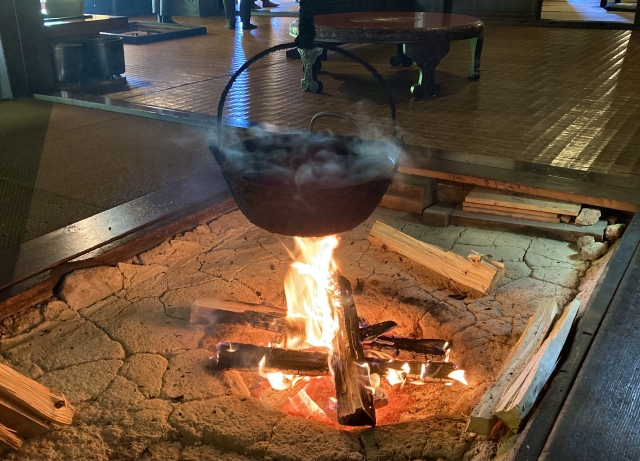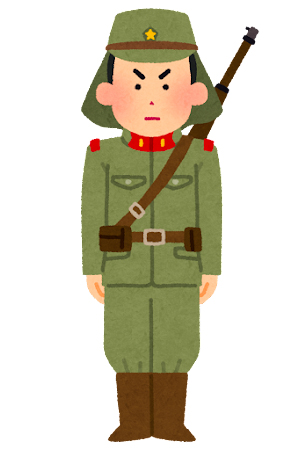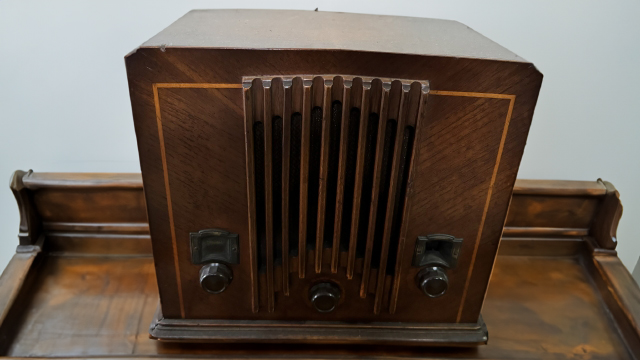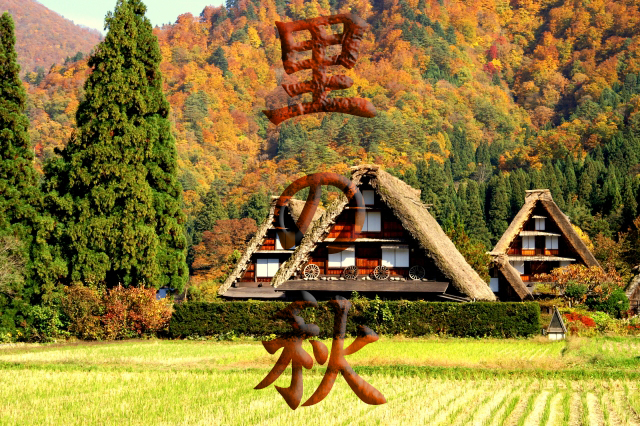Sato no aki
Shizuka na shizuka na sato no aki
Osedo ni kinomi no ochiru yo wa
Ah kaasan to tada futari
kuri no mi nite masu iroribataAkarui akarui hoshi no sora
Naki naki yogamo no wataru yo wa
Ah tousan no ano egao
Kuri no mi tabete wa omoidasuSayonara sayonara yashi no shima
Ofune ni yurarete kaerareru
Ah tousan yo gobujide to
Konya mo kaasan to inorimasuLyricist:SAITOU Nobuo
Composer:KAINUMA Minoru
Recorded in1948
Autumn village
Quiet, quiet, Autumn village.
The night when plant fruits fall into the back door of the house
Oh-just two person with moms.
We are cooking boiled chestnuts. In the hearth.
Bright, bright, Starry sky.
The night when the wild duck flies while screaming,
Oh-I remember Dad’s smile
while eating boiled chestnuts.
Goodbye, goodbye, palm island.
Come home while being shaken by the ship.
Oh, dad, be safe,
I pray with my mom tonight.

A Hidden Story Behind Beautiful Autumn Scenery
“Sato no aki” is cherished as a beautiful song that evokes the warm and gentle atmosphere of autumn in Japan’s satoyama (mountainous rural areas). This lyrical piece, set to a tender melody, expresses the tranquil mood of waiting for winter’s arrival after the harvest season, and has been deeply etched in the hearts of many Japanese people. However, did you know that this seemingly peaceful song about rural autumn scenery actually contains profound sadness and prayers?
Behind the lyrics we know today lies a poignant story of a mother and child living quietly while praying for the safety of a father who went off to war as a soldier. While on the surface it celebrates autumn’s beauty, the song’s deeper layers portray the emotions of a wartime family. This dual structure is what gives “Sato no aki” its special and enduring appeal.

Irori bata (fireplace in living room)
The Original “Starry Night” by SAITOU Nobuo
The origins of this song trace back to a poem titled “Starry Night” written by SAITOU Nobuo in 1941 (Shouwa/Showa 16). This poem, created in the same year that the Pacific War began, contained significantly different content from the lyrics we know today. Particularly striking was the phantom third verse:

“Kireina, kireina yashi no shima,
( On the beautiful, beautiful coconut island,)
Shikkari mamotte kudasai to,
( Please protect it well,)
Ah, tousan no gobuun wo,
( Ah, Good luck in the military fortune, Dad,)
Konya mo hitori de inorimasu”
( Tonight, I pray alone once more.)
The reference to “coconut island” reveals much about the song’s context. Given that it was written at the beginning of the Pacific War, the “father” in the song likely refers to a soldier who departed with the Japanese Army to the southern regions of French Indochina. Understanding this historical backdrop of Japan’s southern expansion adds deeper meaning to these lyrics.
A Child’s Pure Sentiments in the Fourth Verse
The original poem also included a fourth verse:
“Ookiku, ookiku natta nara,
(When I grow up, really big,)
heitaisan dayo ureshii na,
(I’ll be a soldier and be happy,)
nee, kaasan yo boku datte,
(hey Mom, even I will definitely)
kanarazu okuniwo mamorimasu”
(protect our country)
These lyrics reflect the wartime values where young children dreamed of following in their fathers’ footsteps as soldiers. While these words may evoke complex feelings for modern readers, they genuinely express the pure patriotism and family devotion of children during that era. Saito Nobuo’s skill as a poet is evident in how he captured the weight of war through a child’s innocent words.

A beach with palm trees.
A Song Reborn with Japan’s Defeat
Ironically, this song became widely known at the end of 1945, the year Japan was defeated in war. It was featured on an NHK Radio program called “Afternoon Encouragement for Repatriates from Overseas Territories.” However, the original wartime lyrics were deemed inappropriate for the post-defeat era. The militaristic expressions and references to the southern front were incompatible with the new spirit of the times.
Consequently, the lyrics were revised to their current form, and the title was changed to “Sato no aki” (Autumn in the Village). Through this transformation, the song was reborn as a beautiful piece celebrating peaceful rural landscapes while secretly harboring memories of war. The public response was extraordinary, marking one of the most significant reactions since NHK Radio’s establishment.

Old radio
A Song of Hope for Repatriates
The following year, it was featured in a program called “Returnee News,” where it deeply resonated with those returning from overseas. For soldiers returning from battlefields and civilians repatriating from Japanese settlements abroad, this song became a symbol expressing both longing for home and prayers for peace. “Sato no aki,” while containing memories of war, transcended them to sing of hope for a new era, perfectly embodying the sentiments of Japanese people during the post-war reconstruction period.
Perhaps the true value of this song lies in the profound human emotions hidden beneath its surface beauty and the timeless love for family that transcends generations.
It has also been selected as one of “Japan’s Top 100 Songs.”
SAITOU Nobuo monument is erected in his hometown where Saito invented “Sato no aki”.




コメント